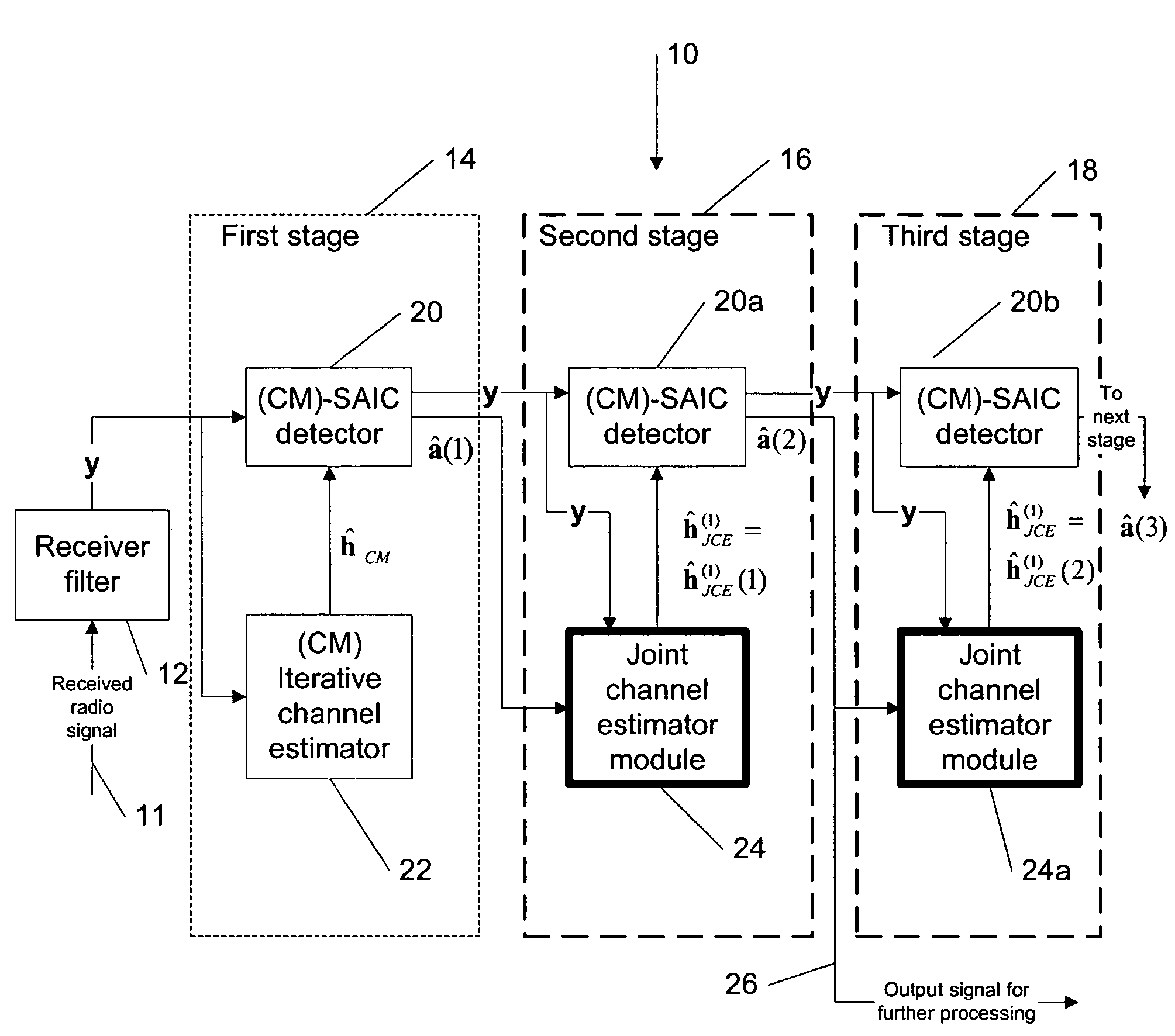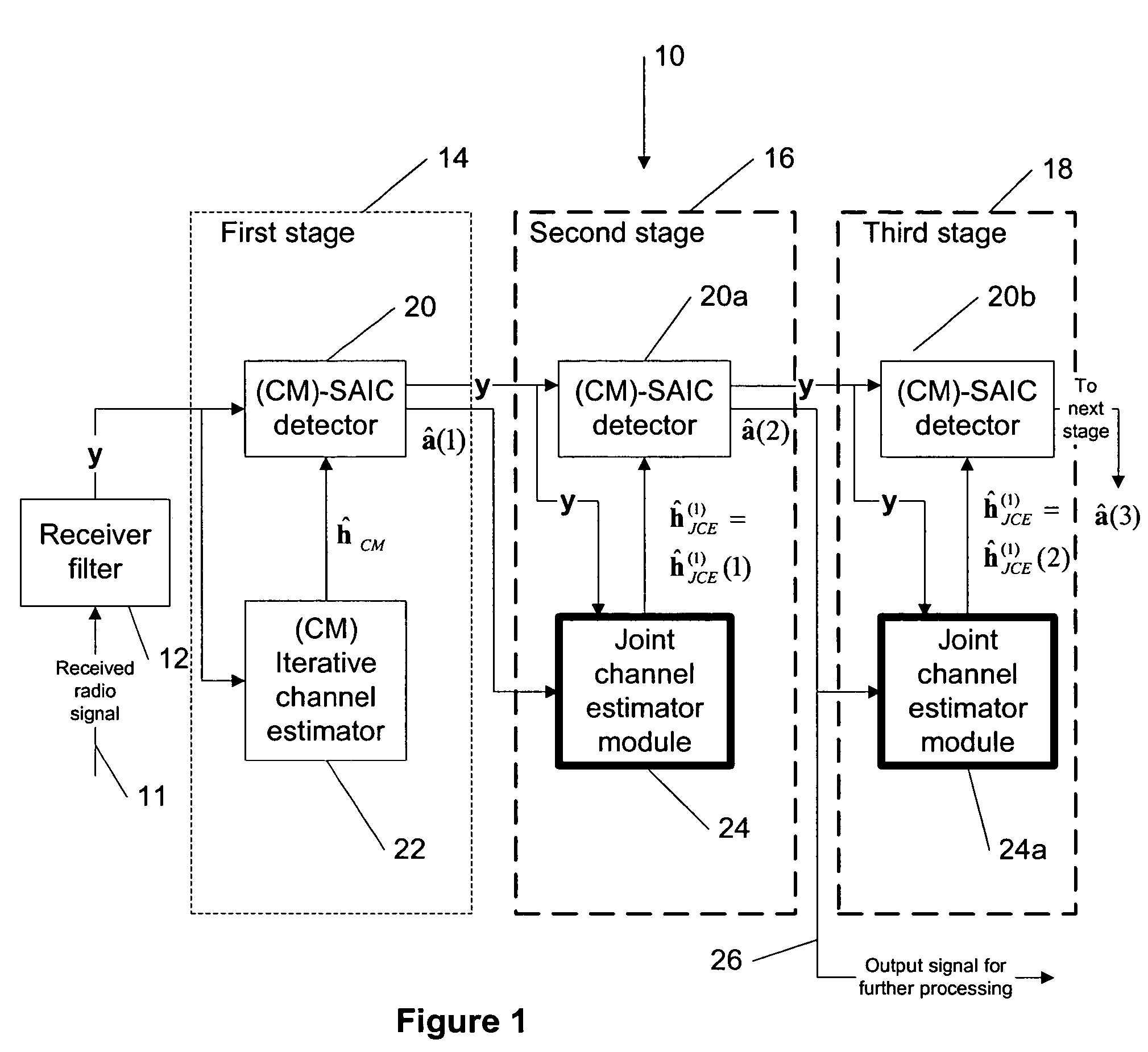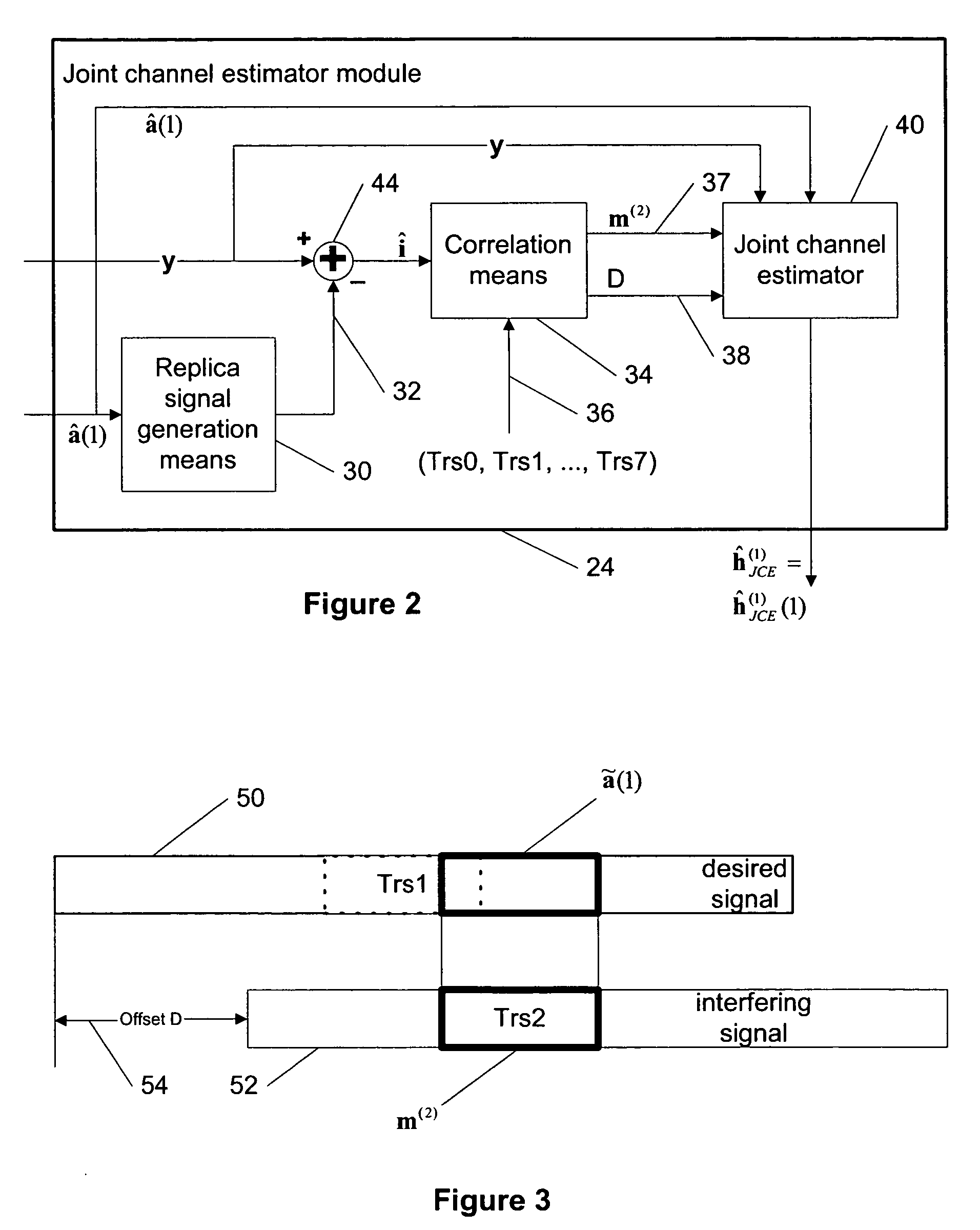Joint channel estimator for synchronous and asynchronous interference suppression in SAIC receiver
a synchronous and asynchronous interference technology, applied in the field of single antenna interference cancellation (saic) receivers, can solve the problems of difficult use of more than one antenna, difficult to improve the accuracy of single antenna interference cancellation methods, and difficult to reduce interference from various sources, etc., to achieve the effect of improving single antenna interference cancellation (saic) receivers
- Summary
- Abstract
- Description
- Claims
- Application Information
AI Technical Summary
Benefits of technology
Problems solved by technology
Method used
Image
Examples
Embodiment Construction
[0022]This invention describes improved single antenna interference cancellation (SAIC) receivers utilizing joint channel estimation for suppression of interference of either synchronous or asynchronous co-channel signals. Conventional (prior art) joint estimation of the desired and interfering co-channel signals provides high accuracy, but it requires known overlapping bit sequences from both desired and interfering co-channel signals. This invention describes the technique to perform joint channel estimation for either synchronous or asynchronous co-channel signals without a prior knowledge of the interfering training sequence or its timing position. The invented joint channel estimation requires initial detection of the desired signal, hence the invention can be implemented as part of the multistage equalization structure.
[0023]FIG. 1 is a block diagram representing a multi-stage SAIC receiver 10, according to the present invention, in which the invention can be used in one possi...
PUM
 Login to View More
Login to View More Abstract
Description
Claims
Application Information
 Login to View More
Login to View More - R&D
- Intellectual Property
- Life Sciences
- Materials
- Tech Scout
- Unparalleled Data Quality
- Higher Quality Content
- 60% Fewer Hallucinations
Browse by: Latest US Patents, China's latest patents, Technical Efficacy Thesaurus, Application Domain, Technology Topic, Popular Technical Reports.
© 2025 PatSnap. All rights reserved.Legal|Privacy policy|Modern Slavery Act Transparency Statement|Sitemap|About US| Contact US: help@patsnap.com



